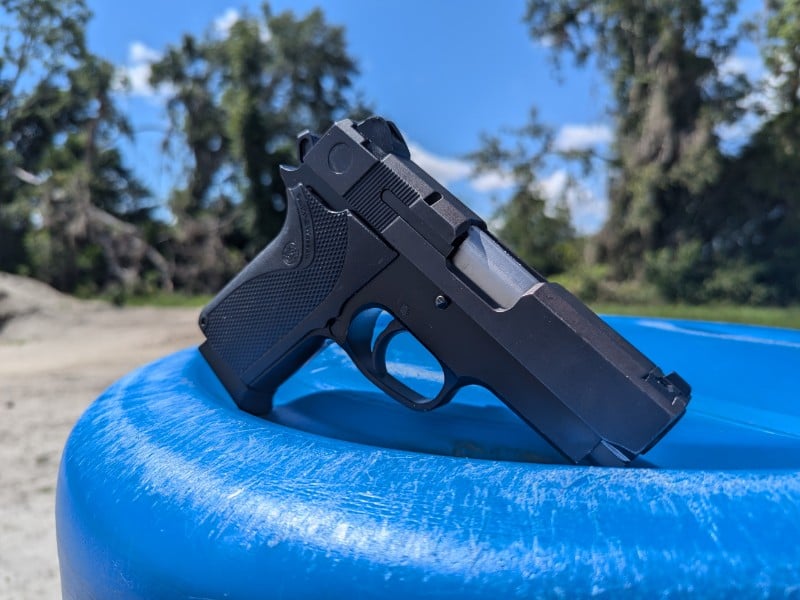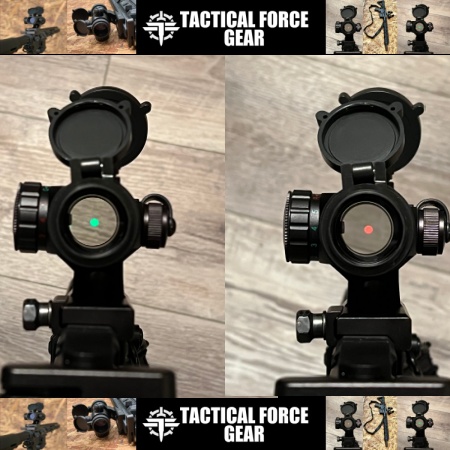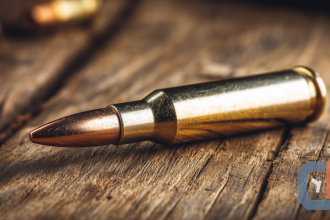Smith & Wesson is one of America’s oldest gun companies, and they made their bones as a revolver company. To this day, they are still one of the largest producers of revolvers. Even though they are well known for their revolvers, they produce one of America’s favorite automatic pistol designs, the M&P line. S&W has been producing semi-auto pistols for over a century now. Most of their semi-auto pistol lines are easy to figure out, but where a lot of folks get lost is the Generations series.
The company produced three distinct generations of metal-frame, hammer-fired, semi-auto pistols from 1954 until 2006 when they were removed from the standard catalog but remained available to law enforcement customers until 2010. In 2014, S&W stopped supporting the third generation of handguns. These guns were extremely popular with law enforcement and occupied the holsters of police forces like the NYPD, the LAPD, and the California Highway Patrol, among many more.
Talking About My Generation
Today, we will discuss the various Generations, their history, models, and ultimately, their fate. These generations are divided into the First, Second, and Third generations. This can be somewhat confusing since the first generation of pistols isn’t the first semi-autos produced by S&W.
S&W’s first semi-autos were produced in 1913. The S&W Model 1913 used a design created by Charles Clement and was available in .32 ACP and .35 S&W Auto. There were eight different variants of these pistols with small redesigns.
There are also S&W semi-autos produced during the ‘Generation’ pistol era that didn’t fall into a particular generation. These are rimfires like the very cool Model 61 Escort and the superbly accurate Model 41 Target pistol.
The First Generation of Smith & Wesson Automatics: 1954 – 1982
The first generation of Smith & Wesson automatics uses a two-digit numerical model number. Smith & Wesson has the distinct honor of producing the first double-action 9mm pistol, the Model 39. S&W produced the gun in 1954 as a competitor to replace the M1911. The Army kept the M1911 in service, but S&W released the Model 39 to the general public. The Model 39 laid the groundwork for what would become the future of the Generation series.
The guns were designed as double-action/single-action firearms with a short recoil system. They were hammer-fired with safeties that often doubled as decockers. There were some variations throughout the varied generations, but that was the basic overview of these guns.
The Model 39 saw ample military service and was preferred by Naval Special Warfare units like the SEALs. This includes the Mk. 22 Mod 0 suppressed pistol. Model 39s were modified to function with 14-round double-stack magazines, which became the basis for the Model 59.
In 1967, the Illinois State Police broke ground by adopting the Model 39 and becoming one of the first police forces to use a semi-auto instead of a revolver. The Rhode Island State Police adopted the S&W Model 39 for their detectives.
The Model 39 became a gunsmith’s favorite, and custom guns were produced like the ASP, the Devel, Trapper, and Behlert. These were high-end custom guns that sought to create a smaller, more concealable model of the S&W Model 39.
As mentioned, the Model 59 was a 39 with a 14-round magazine. There was also the Model 44, a scarce variant of the Model 39 that was single-action only. S&W also produced the Modle 52, a .38 Special semi-auto designed for marksmanship competitions. These guns could only fire wadcutter .38 Special. Another scarce first-generation pistol is the 147A. It’s a 14-shot all-steel gun similar to the Model 59.
The Second Generation: 1979 – 1988
The second generation of S&W pistols began in 1979 and used a three-digit numerical code to designate the model. These guns represented a series of improvements standardized over the first-generation guns. S&W also introduced its first .45 ACP variant and compact options in the second generation.
The original second-generation guns were the 439 and 459. They were improved versions of the Model 39 and Model 59, respectively. Over time, various frame materials and finishes were used, and steel models with blued finishes gained a 5 to the model number, i.e., 539. Stainless variants gained a six, i.e., 659. The 459 shrunk to more compact variants, which became the 469 and 669.
S&W entered the 459 into the XM9 trials, but the Beretta 92 ultimately won. The FBI later purchased 803 of these guns with a special brush finish.
In the mid-80s, S&W produced their first .45 ACP automatic, the 645. This was a full-sized, double-action gun with a single-stack eight-round magazine and a stainless steel finish. They later produced a compact variants known as the 745. Miami Vice character Sonny Crockett carried a 645 after retiring his Bren Ten.
Third Generation: 1988 – 2006 (Catalog); 2010 (Law Enforcement Sales)
The third generation of S&W pistols exploded into a couple dozen model numbers and a variety of calibers. Most third-generation pistols have four-digit model numbers, but not all of them. A value line of guns featured three-digit numbers, and Chief Special models used the CS initial with a numerical designation indicating the caliber.
The third generation expanded into .40 S&W and 10mm and continued with 9mm and .45 ACP. The four-digit numerics indicate the weapon’s caliber, size, action type, finish, and material. The first two digits were caliber, the middle digit was size and action type, and the final digit was finish and material.
Action types included DA/SA and DAO with slide-mounted safety/decockers. There were also models with frame-mounted decockers. S&W uses steel and alloy designs with black, stainless, and two-tone finishes.
The value line of firearms with three initials was separated into the 9mm, 908, 909, 910, and 915, the 457 in .45 ACP, and the 410 and 411 in .40 S&W. These guns aimed to compete with Glock pistols and featured various value-based changes like polymer sights and cheaper finishes.
Some of these numeric model numbers have a series of initials attached. These initials signify something a bit different about the gun. The TSW nomenclature meant the gun had a Picatinny rail for accessories. The LS stands for Ladysmith and represents firearms specifically advertised to women, and NL and NS notations meant the gun used Novak Sights. Further, M stood for military, and the gun featured a Melonite finish and lanyard stud.
The Last Generation
The third generation was the last of the generation series. Smith & Wesson moved into polymer-frame striker-fired pistols. They had the Sigma and SD series, as well as the Walther and S&W SW99, and now the M&P Series. Interestingly, the M&P series introduced metal-frame models.
Depending on the model, these varied-generation guns can fetch a pretty penny, but many still offer good value. Third-generation .45, 9mm, and .40 S&W guns can often be had for a great price and are competent weapons. I’m a fan, but what about you folks? Do you like the metal-frame S&W pistols? Do you own any? Let us know below.
Read the full article here










